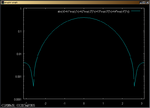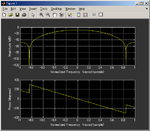susane
Newbie level 6
Hi everyone
I am working on ECG signal capturing using ADS1292R connected with Arduino uno,
Luckily i found an FIR filter library for arduino, i included that in my code, but i dont know which type of filter is it.
So i used the filter coefficients to plot the phase response in matlab. but i am not really good with signal processing,
Can any one help me understand this phase response?
What type of filter is it?
sampling frequency is 125Hz

I am working on ECG signal capturing using ADS1292R connected with Arduino uno,
Luckily i found an FIR filter library for arduino, i included that in my code, but i dont know which type of filter is it.
So i used the filter coefficients to plot the phase response in matlab. but i am not really good with signal processing,
Can any one help me understand this phase response?
What type of filter is it?
sampling frequency is 125Hz


